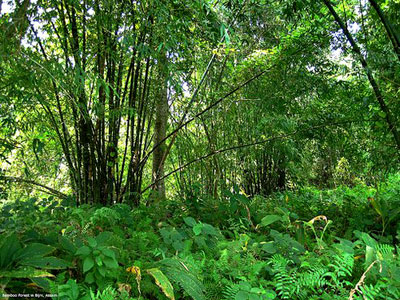|

by Stephen Messenger
April 2, 2012
from
TreeHugger Website

A little over 30 years ago, a teenager named Jadav "Molai"
Payeng began burying seeds along a barren sandbar near his
birthplace in northern
India's Assam region to grow a refuge for
wildlife.
Not long after, he decided to dedicate
his life to this endeavor, so he moved to the site where he could
work full-time creating a lush new forest ecosystem. Incredibly, the
spot today hosts a sprawling 1,360 acre of jungle that Payeng
planted single-handedly.
The Times of India
recently caught up with Payeng in his remote
forest lodge to learn more about how he came to leave such an
indelible mark on the landscape:
It all started way back in 1979 when floods washed a large number of
snakes ashore on the sandbar. One day, after the waters had receded,
Payeng , only 16 then, found the place dotted with the dead
reptiles.
That was the turning point of his life.
"The snakes died in the heat,
without any tree cover. I sat down and wept over their lifeless
forms. It was carnage . I alerted the forest department and
asked them if they could grow trees there.
They said nothing would grow there.
Instead, they asked me to try growing bamboo. It was painful,
but I did it. There was nobody to help me. Nobody was
interested," says Payeng, now 47.
While it's taken years for Payeng's
remarkable dedication to planting to receive some well-deserved
recognition internationally, it didn't take long for wildlife in the
region to benefit from the manufactured forest.
Demonstrating a keen understanding of
ecological balance, Payeng even transplanted ants to his burgeoning
ecosystem to bolster its natural harmony.
Soon the shadeless sandbar was
transformed into a self-functioning environment where a menagerie of
creatures could dwell. The forest, called the Molai woods, now
serves as a safe haven for numerous birds, deers, rhinos, tigers,
and elephants - species increasingly at risk from habitat loss
elsewhere.
Despite the conspicuousness of Payeng's project, Forestry officials
in the region first learned of this new forest in 2008 - and since
then they've come to recognize his efforts as truly remarkable, but
perhaps not enough.
"We're amazed at Payeng," says
Assistant Conservator of Forests, Gunin Saikia. "He has been at
it for 30 years. Had he been in any other country, he would have
been made a hero."
|

